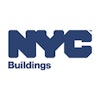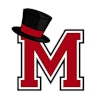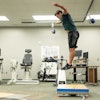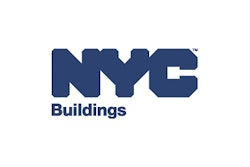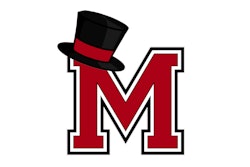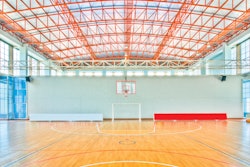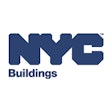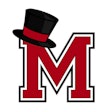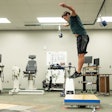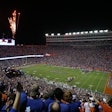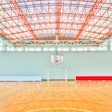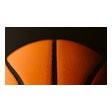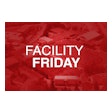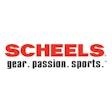Copyright 2017 The Buffalo News
All Rights Reserved
The Buffalo News (New York)
Out are grass fields that need mowing and that get muddy in the spring.
In is synthetic turf.
Out are Saturday afternoon games.
In are Friday nights under the lights.
Out are individual football or soccer fields.
In are large, multi-use athletic complexes.
If you haven't noticed, school districts across the Buffalo region are giving high school sports a makeover — new artificial-turf fields, new bleachers, new restrooms, new concession stands, new rubberized running tracks, lights, video scoreboards and field houses.
Niagara Falls opened its new facility in 2015; Sweet Home, last spring. Unveilings continued last fall and this spring in places like Clarence, Starpoint, Williamsville and Kenmore-Town of Tonawanda.
More upgrades are on deck - Amherst, Cheektowaga, Cleveland-Hill, Depew, East Aurora, Eden, Lockport and North Tonawanda, among them.
"If you've seen some of the new ones that have taken place, it's a complete athletic complex, making it user-friendly for spectators," said Timm Slade, executive director of Section VI, the Western New York portion of the state's Public High School Athletic Association.
"Clarence, Sweet Home, Niagara Falls are all outstanding," he said. "Williamsville North is incredible."
And they are not cheap.
Taxpayers, nonetheless, are signing off on tens of millions of dollars for the upgrades. Other school districts — including Buffalo, which can't go directly to taxpayers — are trying to find a way to pay. And to keep up.
Following 'the Joneses'
In North Tonawanda, the school district will spend about $9 million on athletic renovations, including its new all-purpose stadium scheduled to open in 2018.
In Ken-Ton, voters approved $16.7 million to redo the athletic fields at Adams Field, home to Kenmore East High School, and at Crosby Field, home to Kenmore West.
In Niagara Falls, $18 million went into building the athletic complex and field house on 6½ acres behind Niagara Falls High School.
And in Williamsville, taxpayers agreed to $27 million to transform the athletic facilities at all three high schools - North, South and East.
School districts normally get reimbursed a percentage of the project cost by New York State, noted Thomas Maturski, Williamsville's assistant superintendent for finance and management services.
Williamsville, for example, will likely receive about 60 percent reimbursement; Ken-Ton, about 75 percent.
"It's a national trend," said Robert Zayas, executive director of the New York State Public High School Athletic Association. "I think communities are really seeing the value of high school sports, what it brings to the community and what it does to benefit the students who participate."
"Look at the number of people who will come out to Friday night games, Saturday games," said David Mauricio, chief of strategic alignment and innovation for the Buffalo Public Schools. "People love to go to athletic events. There's high interest."
For many schools, the new turf fields provide better drainage and are an answer to the region's unpredictable spring weather - like this year - which can turn their overused grass fields into mud puddles and shorten the sports season.
"To be perfectly honest, Western New York has lagged behind other areas of the state when it came to athletic fields," Maturski said. "I think a part of that is it's an expensive thing to implement and I think everyone wanted to make sure we were getting the best product."
For others, it's about safety or less maintenance, or accommodating a growing participation in youth sports, or making room for new teams like lacrosse and field hockey, or updating aging facilities.
"We were going to have to do something," said Geoffrey Hicks, school superintendent in Clarence. "With the amount of practice time for the outdoor sports, it made sense for us. It had been so long since we had touched the fields."
And for some, it's about keeping up with the Joneses.
"We felt it was important to do it for equity's sake," said Mark Laurrie, superintendent of the Niagara Falls City School District.
"Niagara Falls often gets a bad rap," Laurrie said, "and to have substandard fields and facilities is just another nail in the perception that we're not on par or equal to our neighbors."
Instead, the Falls' sparkling new athletic facilities raised a lot of eyebrows from visiting teams.
"I think they said, 'If Niagara Falls can do this, why can't we?'" Laurrie said.
"It's 'curb appeal,'" said Jeff Alger, director of athletics, health and physical education for the North Tonawanda City School District. "A lot of time when people visit a school, it's one of the first things they look at."
Who pays for it all?
But equity is a big challenge for the Buffalo Public Schools, which are at a disadvantage in this arms race because - unlike the suburban districts - they don't have the ability to levy taxes.
A consultant recently reaffirmed that the district's athletic facilities are inferior to those in other districts.
High school teams in the city use three stadiums - Robert E. Rich All-High Stadium, Charles Dingboom Riverside Field and Johnnie B. Wiley Stadium - all three with turf fields, but also all in need of renovations. There is also a shortage of adequate practice fields for the 62 football, soccer, baseball and softball teams throughout the district, explained Aubrey Lloyd, Buffalo's athletic director.
Such shortcomings have forced the district to embark on a plan to renovate its athletic facilities, add a field house and partner with the City of Buffalo to fix up available fields at city parks.
Upgrading existing fields would cost at least $5.6 million, school officials estimate, and that doesn't include the price for a new multi-purpose field house.
"All across the city, we want to upgrade," Mauricio said. "This will be a multi-year effort, obviously, but we want to upgrade all our fields to be competitive with what the fields look like in the suburban districts."
But how to pay?
Buffalo would also seek money from private foundations.
But it's a question other school districts also are being forced to ask so as not to saddle taxpayers.
In Lancaster, voters in 2015 approved capital improvements including $7.7 million for a new turf field and improvements to its field house. It came with a caveat: Boosters needed to raise $1 million to help pay for the project.
Lancaster is still waiting.
Taxpayers in the Iroquois Central School District also voted for $6 million in renovations to athletic fields; but that, too, came with the condition the community raised $1.9 million by the end of February.
It didn't, said Douglas Scofield, the district's superintendent.
Now, he said, the school district is trying to figure out how to proceed.
Read More of Today's AB Headlines
Subscribe to Our Daily E-Newsletter
Terms and Conditions Privacy Policy










